With recent school closures, many parents have had to become instant homeschoolers.
Whilst the idea of temporary homeschooling may seem daunting, there are many educational toys out there to aid you in your quest. As an experienced mathematics teacher, an advocate for visual learning and mother of one, I would like to provide you with my top toys that aid mathematical learning. These toys make teaching at home easier with minimal set-up.
1. Multilink cubes by Learning Resources
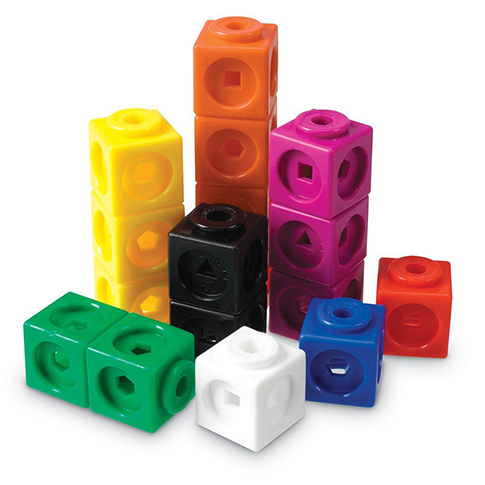
Multilink cubes are a staple item in any mathematics learning environment. These cubes help maths come alive and support inquiry into many concepts!
A popular use for the cubes is to teach ratio. One example of how ratio can be represented with multilink cubes is for learners to design their own bridges with them. However, there is an added level of challenge to this activity. For every 8 red cubes the designer uses, they must also use 14 blue ones. You can also use a task like this to pose additional questions, such as ‘If a bridge uses 96 red cubes, how many blue are needed?’
This is just one of myriad ways that multilink cubes can be used to develop problem-solving skills. Another idea is to use multilink cubes to illustrate that multiplication is repetition of equal groups. 3 groups of 3 cubes would equal 9 cubes in total and this is a perfect way to illustrate the concept to a visual learner.
I recently created a cool illustration for the math.mama Instagram page explaining how Pythagoras’s Theorem works using these handy little multilink cubes. They really are my top resource for teaching mathematics!
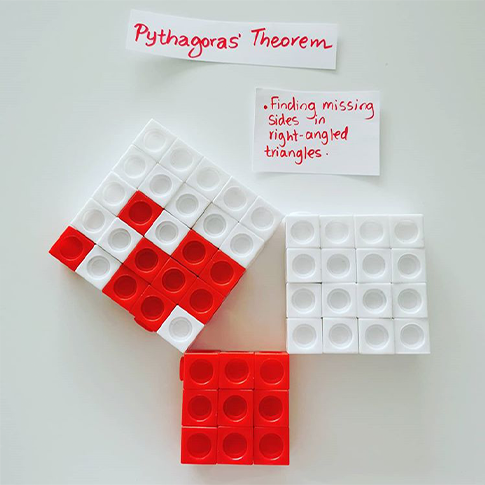
2. Garden Games Wooden Game Toss
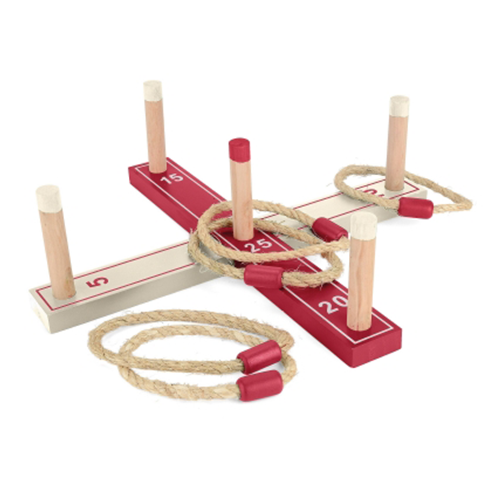
To get some fresh air and practice your mental maths, why not have a go at this fun outdoor classic? Your little ones will be hooked for hours and they can practice numeracy at the same time. The idea of the game is to toss your ring and try to get the highest score by landing it on one of the poles.
The maths modification you could try is ‘First to 100’. Take it in turns to throw the rings and the first to reach the target of 100 would win the game. This gets children counting whilst also strategising as they should not go over their target. The game has many possibilities and you would soon see that children like to introduce their own rules and versions of the game.
3. I Sea 10 Game by Learning Resources
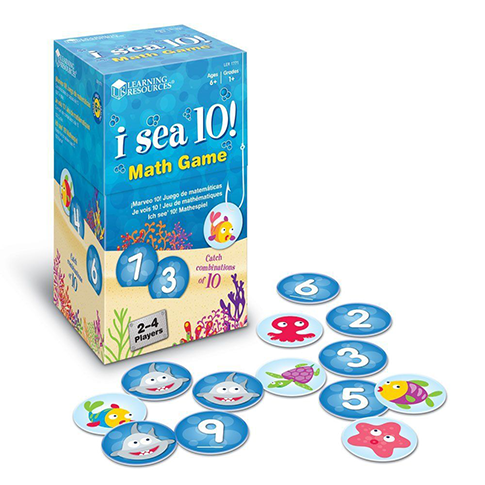
Card games have always been popular with children and this one is no exception. Players place their cards on the table and take turns to flip them over, shouting “I see 10” as soon as they can make a total of 10. This is a great way to practice number bonds of 10 (pairs of numbers that add up to 10). When children know number bonds well, they can progress and understand subtraction with ease.
This sea-themed game would bring hours of fun for all the family. Be careful of the shark card though, you would be unlucky to get this card as it would mean losing your winnings!
4. Building Octagon Puzzle by Grimm’s
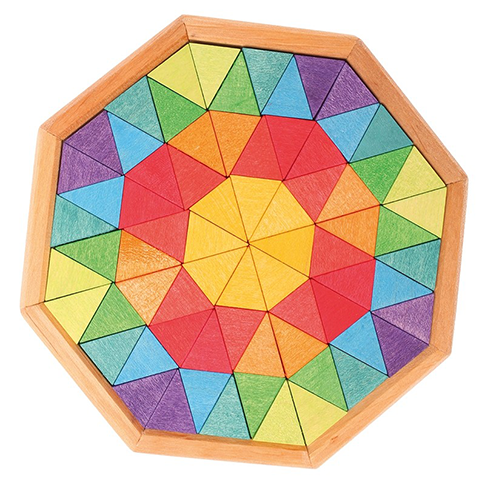
One thing that my friends know about me is that I am a total geometry buff. This octagon puzzle reminds me of the work by Dutch graphic artist M.C. Escher, who was famous for his mathematically inspired woodcuts that used the concept of tessellation (placing shapes together in a way that they can connect perfectly without gaps). This concept is present in the puzzle in the way that all the triangles tessellate, fitting beautifully into the large octagon shape.
The opportunities for learning mathematics are endless here. Learners can create new patterns by rearranging the colours and use the puzzle as inspiration for their own tessellation artwork.
The puzzle can also be used to explore fractions. For instance, learners can count 8 purple triangles out of a total of 72 triangles. This is represented as the fraction 8/72 and can be simplified by dividing both the numerator and denominator of 8/72 by 8 to get 1/9. The conclusion found is that 1/9 of the octagon puzzle has purple triangles. Children can use the puzzle to form different questions and capitalise on their own natural sense of inquiry.
5. LeapStart Cook It Up! Maths Activity Book by LeapFrog
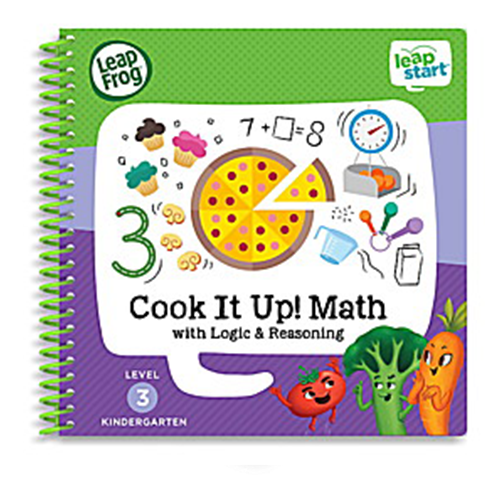
I picked this interactive activity book because of my love for cooking. Children can get involved in all kinds of things that keep your house and family in happy and working order. The added bonus is how DIY, gardening, cooking, and all manner of household maintenance activities are really natural opportunities for learning. Cooking, for instance, is chocked full of mathematics as well as being an invaluable lifelong skill.
This Leapfrog cooking and maths activity book explores 16 key maths, logic and reasoning skills. Some skills that younger children can develop when following simple recipes include weighing, sorting, mixing and time management.
You can also take the concepts from this book further and adjust recipes for different amounts of people. For example, if a recipe is for 4 people, then your child would need to correctly divide each ingredient by 2 in order to get the exact ingredients for 2 people. You could even practice conversions between different measures. 1.75 kg of flour being equivalent to 1750g is one type of conversion that children can calculate. Perhaps this could lead to conversations about measuring volume. Other follow-on questions can be used, such as ‘What does a millilitre of milk look like and would it fit on a teaspoon?’ There is plenty to explore with this book and you get to eat lots of yummy dishes afterwards!
6. Code & Go Robot Mouse Activity Set by Learning Resources
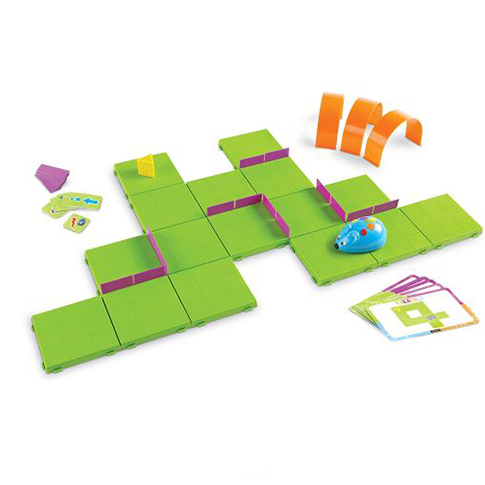
Coding is a desirable skill in the competitive 21st-century economy and is used to build and run websites, apps, video games, and much more. When children learn to code, they learn problem-solving and practice analytical thinking. Colby the robotic mouse will help introduce your child to coding in a fun way. The game includes step-by-step instructions and is simple to follow. After helping Colby find the cheese, children will understand programming principles and appreciate that robots actually execute commands given to them in the form of codes.
Give this one a try – your children won’t be disappointed.
7. Bajo Balance Pyramid by Bajo
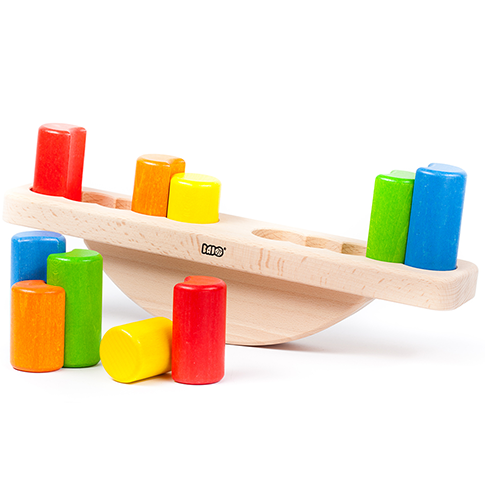
Everyone has a personal love or hate relationship with algebra. Even as a maths teacher, I have to admit it was not quite love at first sight! Solving equations became a quick and senseless procedure early on at school. I knew I was finding the value of a variable, but I did not understand the principles behind solving equations.
Later on, I learned that algebra is actually a lot of fun but it didn’t come naturally. Certainly a toy like the balance pyramid would have helped me understand the balancing nature of equations. This toy is suitable for very young children because it teaches coordination and pattern formation. However, I would equally use it with teenagers because it helps teach the property of equality via a visual model.
Check out Whirli’s other educational toys here. I hope you enjoyed my recommendations and for more insights into mathematical concepts follow my page math.mama on Instagram and Facebook.
Share this article